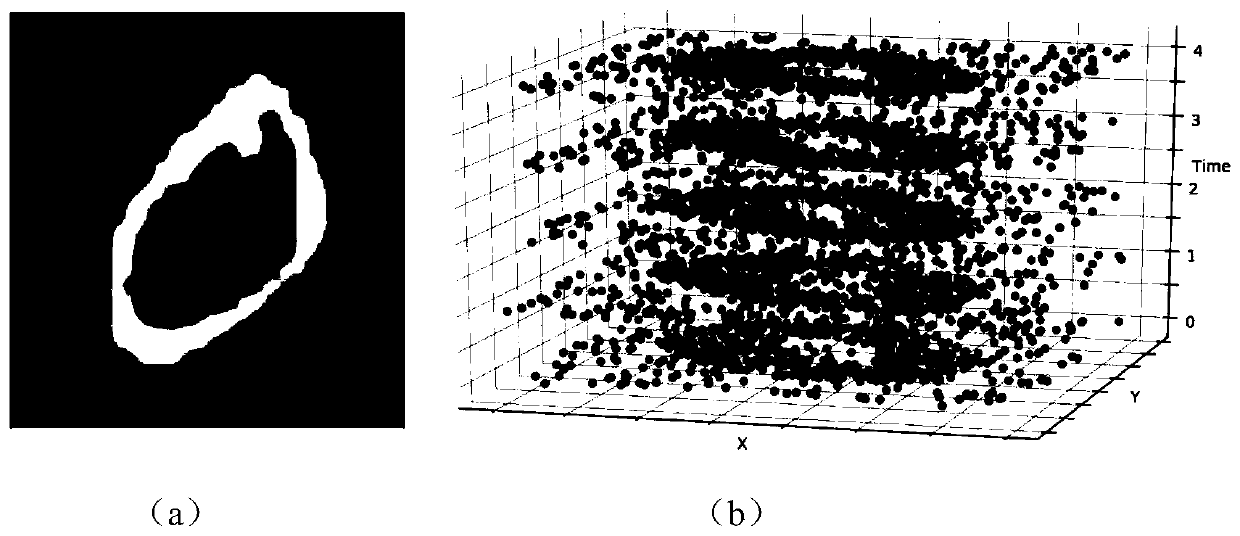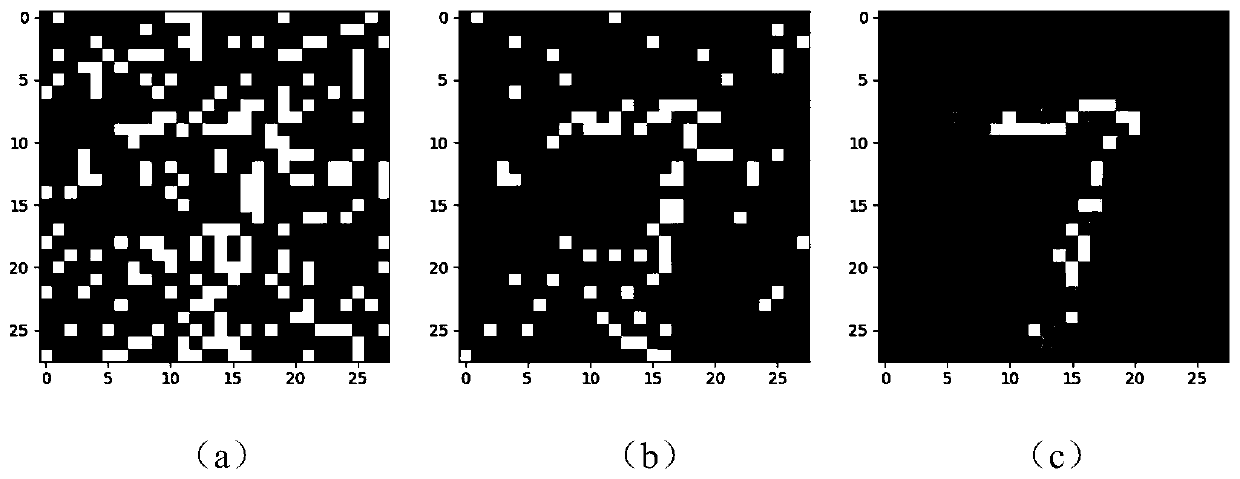Method for learning and recognizing image pulse data space-time information based on Spike cube SNN
An image, spatio-temporal technology, applied in the field of pulse sequence learning, can solve the problems of not fully exerting the potential of pulse sequence spatiotemporal information expression, failing to effectively utilize time sequence information, and not having the ability to discover pulse sequence time sequence information.
- Summary
- Abstract
- Description
- Claims
- Application Information
AI Technical Summary
Problems solved by technology
Method used
Image
Examples
Embodiment Construction
[0045] Below in conjunction with accompanying drawing, further describe the present invention through embodiment, but do not limit the scope of the present invention in any way.
[0046] The invention proposes a method for jointly learning the time and space information contained in the spike sequence based on the spike cube neural network, which can be applied to image category recognition. Wherein, the pulse sequence includes image pulse sequence, voice sequence information, vibration sequence information and the like.
[0047] The invention provides a method for jointly learning the time and space information of the spike sequence based on the spike cube and LIF neuron models and using the STDP mechanism. The implementation process is: first you can refer to figure 2 A set of pulse neural network is built based on the structure of the neural network, and the neurons of the neural network select the LIF model; then prepare the pulse sequence to be learned, and divide it int...
PUM
 Login to View More
Login to View More Abstract
Description
Claims
Application Information
 Login to View More
Login to View More - R&D
- Intellectual Property
- Life Sciences
- Materials
- Tech Scout
- Unparalleled Data Quality
- Higher Quality Content
- 60% Fewer Hallucinations
Browse by: Latest US Patents, China's latest patents, Technical Efficacy Thesaurus, Application Domain, Technology Topic, Popular Technical Reports.
© 2025 PatSnap. All rights reserved.Legal|Privacy policy|Modern Slavery Act Transparency Statement|Sitemap|About US| Contact US: help@patsnap.com



